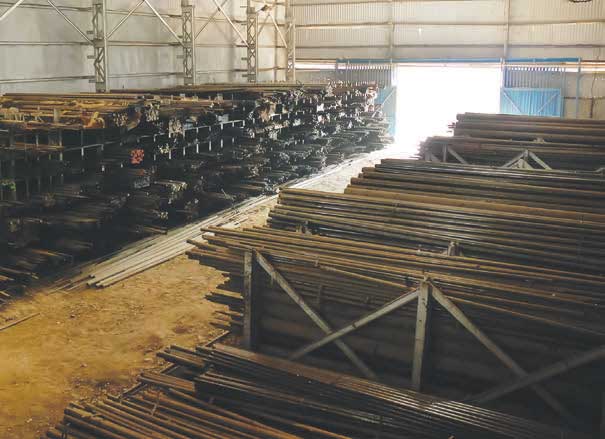Motilal Laxmichand Sanghavi is one of the fastest growing companies engaged in supplying all types of seamless, boiler tubes, hydraulic tubes, heat exchanger tubes, pipes & fittings, and square & rectangular tubes.
In an exclusive interaction with Tube & Pipe India, Mr. Hemal D. Sanghavi, Partner, Motilal Laxmichand Sanghavi, takes us through the company’s wide product range, the clientele of the company, market footprint, and future plans.

“The industry is doing quite well …. The last 18 months have been on a growth trajectory. I feel the same growth pattern would continue for the next 18 months too.”
Tube & Pipe India: Could you please give us a brief outline of the business journey of your company along with milestones?
Hemal D. Sanghavi: The Company was established in 1930 by my late grandfather Mr. Motilal Laxmichand Sanghavi. It is a 90-year-old company and over the years, we have grown to be one of the prime and largest stockists of seamless and ERW pipes & tubes in India. Our warehouse is in Kalamboli, Maharashtra.
Between the late 1960s and early 70s, we were the first dealers for Tata Steel which was earlier known as TISCO. Around the late 70s and early 80s, we became distributors and dealers for Murugappa Group’s Tube Investments of India Ltd. for ERW boiler tubes. We’ve been associated with Indian Seamless Metal Tubes Ltd., which is now known as ISMT, since its inception. Similarly, we’ve been with Maharashtra Seamless Ltd. since its inception. We were also dealers of Kalyani Seamless Tubes, which is now taken over by Indian Seamless Metal Tubes. These are some of the major milestones of our company.
Around fifteen years ago, India was not manufacturing tubes over 10 inches. Hence, we had to import products from Japanese companies such as Sumitomo Corporation, JFE Steel, and Nippon Steel Corp., and European firms like Tenaris. Apart from this, we have imported goods from Russia, the Czech Republic, Romania, and Ukraine. However, now the manufacturing capacity has increased to 20 inches and we do not import anymore.
TPI: Cast some light on the infrastructure and machines installed at your facility.
HDS: We have a big stockyard in Kalamboli where we have a crane loading and unloading facility as well as the basic testing facility that is required for third-party inspection agencies. We provide IBR certificates to our clients as and when required.

TPI: Tell us about your product portfolio along with its strength and application. What have been your recent developments?
HDS: Majorly, we have a stock of carbon steel seamless pipes – SA/ ASTM A 106 Gr B, SA/ ASTM A 53, API 5L Gr. B., low-temperature carbon steel seamless pipes – SA/ ASTM A 333 Gr. 6, SA/ ASTM A 333 Gr.1, Alloy Steel Seamless Pipes – IBR – SA 335 P1, SA 335 P5, SA 335 P9, SA 335 P11, SA 335 P22, and ERW boiler tubes for the sugar industry. We also keep higher grades like P11 and P22 for the powerhouse.
Notably, we are growing our product mix. Additionally, we have included special grades like P11 and P5, amongst other products to the company’s product portfolio.
TPI: Shed some light on the market footprint and clientele of your company.
HDS: We have various clients. In the oil and gas industry, we are dealing with all the refineries such as Indian Oil Corporation Ltd., Bharat Petroleum Corporation Ltd., Reliance Industries Ltd., and Chennai Petroleum Corporation Ltd. either through tenders or through direct procurement. In the engineering segment, we have Larsen & Toubro Ltd. and GB Power Co. Ltd., amongst others as our major clients. We have also started focusing on exports.
Also Read: AMOB: Eyes Indian Market for Future Expansion
TPI: How do you see the market evolving in the future and what would be your roadmap?
HDS: The industry is doing quite well and the current government is quite supportive. We see a tremendous growth opportunity in alloy steel and carbon steel segments. Although the market is getting complicated in the terms of margin, the volume seems to be good. The last 18 months have been on a growth trajectory. I feel the same growth pattern would continue for the next 18 months too. After 2024, there might be a sudden consolidation.










